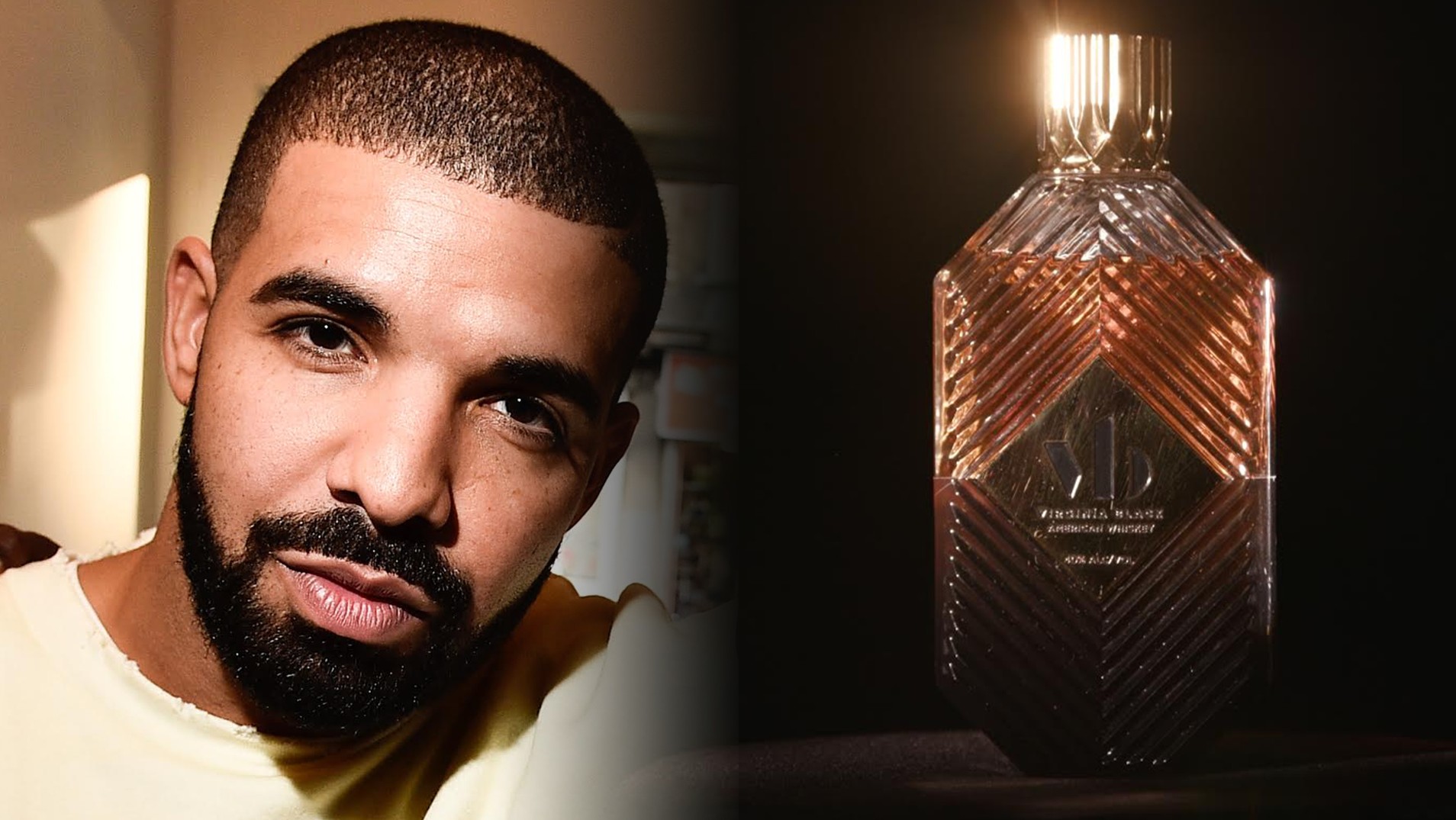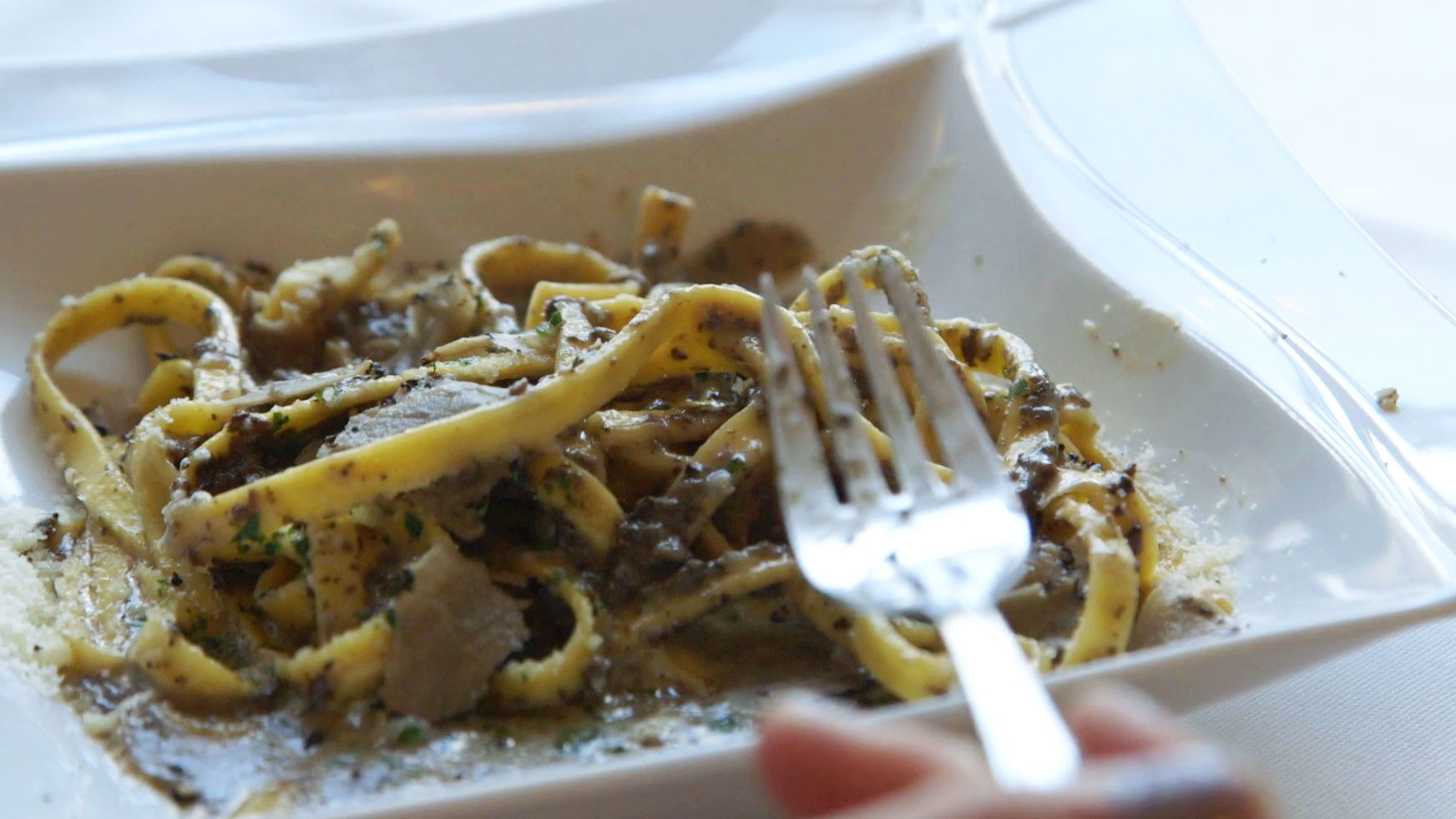Image via Flickr user stacydianewilliams.
Brown spirits are all the rage these days. While vodka continues to reign supreme among U.S. palates, racking up a remarkable $6.2 billion in sales last year, the clear spirit lacks the depth of flavor and, frankly, the “cool factor” of premium American whiskeys, whose sales rose 8.1 percent in 2017—growth that the Distilled Spirits Council attributes, in large part, to millenials’ taste for small-batch bourbons. In its report tracking 2017 sales, the Council’s senior vice president, Christine LoCascio, commented that “international adult consumers are exploring more expensive U.S. spirits driven by their fascination with American whiskey’s heritage.”It’s a heritage that can certainly be viewed as romantic, conjuring up images of lawless, whiskey-swilling Wild West badasses like Calamity Jane and illicit Prohibition-era stills hidden throughout the backcountry. Unsurprisingly, it’s whiskey’s often-checkered history that distillers capitalize on, with producers such as Backbone Bourbon hyping the spirit’s proletarian origins: “A glass of bourbon has been the reward for a long day labored in fields and factories by men across America for more than a century. Furrowed brows, dirty with grit and sweat have sat with a glass in hand—contemplating achievements made and the mountains to climb the day next.” Even the names of whiskey brands emphasize the product’s rogue, DIY nature: think Rogue, Lost Republic, Rebel Yell. Such marketing is a clear bid to capture the imaginations of all whiskey drinkers—not just millennials—and, more than likely, to soothe any cases of sticker shock. After all, what’s a cool $50 when you’re paying for booze and a backstory? But while whiskey distillers go to great length to stress the history, craft and originality of their product, what a great many aren’t telling drinkers is that far from possessing local character, these bourbons and ryes are actually distilled in huge batches in Indiana at a place called MGP, an industrial distiller of spirits as well as a manufacturer of food industry ingredients such as wheat proteins and starches. Dozens of well-known whiskey makers large and small, from Bulleit to Templeton, don’t actually distill their product themselves; rather, they source a portion, or all, of their bourbons and ryes from MGP. And while labeling laws require that makers list the state in which the spirit was distilled, brands don’t have to reveal anything about their whiskeys’ origin other than that. Indeed, many seem to obscure their Indiana roots: cocktail bar fave Widow Jane, for example, calls attention to its Brooklyn cred on its website: “The pure, unique waters of the Widow Jane Mine are what distill our artisan spirits in Red Hook, Brooklyn.” In fact, its most popular bottling, the company’s 10-year-old straight bourbon, is sourced from a large, unnamed producer in Kentucky—possibly from MGP’s original location, but the Brooklyn-based distiller won’t say.In a recent NBC News article on the whiskey world’s veiled relationship with MGP, independent— truly independent—spirits-makers like Colin Spoelman of Brooklyn’s Kings County Distillery called out the practice as “shady.” But for whiskey expert Heather Greene, the “controversy” surrounding MGP is old news—she wrote about it in her 2015 book Whiskey Distilled—and, well, not all that controversial.“Personally, I think it’s making a mountain out of a molehill,” she says of the issue. She points out that many bottlers all over the spirits world—not just whiskey makers—establish and curate a strong brand identity while sourcing their actual product from a large-scale distillery. What it comes down to is a matter of choice—and of resources—for the brand.“There are many ways to skin a cat,” she says. “You can either create a bottling and distill it from seed to glass at your facility, or your can bring it in from outside sources while you get your distillery up and running.”
But while whiskey distillers go to great length to stress the history, craft and originality of their product, what a great many aren’t telling drinkers is that far from possessing local character, these bourbons and ryes are actually distilled in huge batches in Indiana at a place called MGP, an industrial distiller of spirits as well as a manufacturer of food industry ingredients such as wheat proteins and starches. Dozens of well-known whiskey makers large and small, from Bulleit to Templeton, don’t actually distill their product themselves; rather, they source a portion, or all, of their bourbons and ryes from MGP. And while labeling laws require that makers list the state in which the spirit was distilled, brands don’t have to reveal anything about their whiskeys’ origin other than that. Indeed, many seem to obscure their Indiana roots: cocktail bar fave Widow Jane, for example, calls attention to its Brooklyn cred on its website: “The pure, unique waters of the Widow Jane Mine are what distill our artisan spirits in Red Hook, Brooklyn.” In fact, its most popular bottling, the company’s 10-year-old straight bourbon, is sourced from a large, unnamed producer in Kentucky—possibly from MGP’s original location, but the Brooklyn-based distiller won’t say.In a recent NBC News article on the whiskey world’s veiled relationship with MGP, independent— truly independent—spirits-makers like Colin Spoelman of Brooklyn’s Kings County Distillery called out the practice as “shady.” But for whiskey expert Heather Greene, the “controversy” surrounding MGP is old news—she wrote about it in her 2015 book Whiskey Distilled—and, well, not all that controversial.“Personally, I think it’s making a mountain out of a molehill,” she says of the issue. She points out that many bottlers all over the spirits world—not just whiskey makers—establish and curate a strong brand identity while sourcing their actual product from a large-scale distillery. What it comes down to is a matter of choice—and of resources—for the brand.“There are many ways to skin a cat,” she says. “You can either create a bottling and distill it from seed to glass at your facility, or your can bring it in from outside sources while you get your distillery up and running.” As Greene points out, it’s not all that easy to just set up a distillery, brew up some bourbon, and send it to market. After all, the average age of a whiskey is three to five years, with premium, in-demand bottlings often aging for as long as 12 years. As a result of more liberal state distillation laws and a surge in consumer demand, American distilleries have more than tripled their numbers in recent years, with more than 1,400 operating across all 50 states. But newly established distilleries have to sell something—even before their own product is ready. That’s where sourcing from MGP comes in, Greene explains.“Outside sourcing lowers the barrier to entry to creating a distillery,” she says. “If you don’t have the resources to wait four years, you can still market an expertly blended whiskey while you’re working on your own.”That reason is exactly why Widow Jane opted for outsourcing when the company got its start in Red Hook in 2012.“Sourcing whiskies was the only way to get started and to raise the funds to develop our own products and fund the development of the non GMO heirloom grains we use,” Widow Jane’s Michele Clark told MUNCHIES. The distillery continues to source some of its bourbons from large producers in Kentucky and Indiana, but also distills its own products, including its Baby Jane bourbon.“From our perspective the most important thing is to deliver the most delicious and great tasting whiskies to consumers,” Clark added. “That, for us, is the secret of success.”Indeed, MGP has a reputation for distilling superior bourbons and ryes. According to a fact sheet sent by the company, the brand was established in Atchison, Kansas in 1941 and got its start distilling high-quality alcohol included in the rations of World War II soldiers. After the war, MGP broadened its market reach, becoming a leading supplier of spirits and eventually acquiring the 170-year-old Lawrenceburg, Indiana distillery where it now produces and ages its whiskeys. All of that tradition results in some damn fine bourbons and ryes, Greene says, that whiskey makers are happy to call their own.“If you are a small startup brand and you source some really cool old 11- or 12-year-old bourbon on the market and you bought it and you thought it was great—is there something wrong with that?”She doesn’t think so—and neither does the popular whiskey brand Bulleit, which distills its own orange-label Frontier Whiskey at its new Shelbyville, Kentucky* facility, but sources 100 percent of its green-label rye from MGP. As a spokesman for Taylor Strategy, the PR firm that represents Bulleit, confirmed on background, the brand has always been transparent about the source of its rye. He explained that while the production of whiskey is a fairly straightforward—if lengthy—process, rye is a stickier, rougher grain that can do a number on distillery machinery. That’s part of the reason that outsourcing the distillation of rye is a common practice among brands.“From a business and production standpoint, it makes sense to partner with MGP on rye because it’s a harder grain to distill down compared to corn or barley,” Ed Bello, a brand director at Bulleit, wrote in a statement sent to MUNCHIES. “MGP has the know-how and equipment to handle those challenges smoothly.”
As Greene points out, it’s not all that easy to just set up a distillery, brew up some bourbon, and send it to market. After all, the average age of a whiskey is three to five years, with premium, in-demand bottlings often aging for as long as 12 years. As a result of more liberal state distillation laws and a surge in consumer demand, American distilleries have more than tripled their numbers in recent years, with more than 1,400 operating across all 50 states. But newly established distilleries have to sell something—even before their own product is ready. That’s where sourcing from MGP comes in, Greene explains.“Outside sourcing lowers the barrier to entry to creating a distillery,” she says. “If you don’t have the resources to wait four years, you can still market an expertly blended whiskey while you’re working on your own.”That reason is exactly why Widow Jane opted for outsourcing when the company got its start in Red Hook in 2012.“Sourcing whiskies was the only way to get started and to raise the funds to develop our own products and fund the development of the non GMO heirloom grains we use,” Widow Jane’s Michele Clark told MUNCHIES. The distillery continues to source some of its bourbons from large producers in Kentucky and Indiana, but also distills its own products, including its Baby Jane bourbon.“From our perspective the most important thing is to deliver the most delicious and great tasting whiskies to consumers,” Clark added. “That, for us, is the secret of success.”Indeed, MGP has a reputation for distilling superior bourbons and ryes. According to a fact sheet sent by the company, the brand was established in Atchison, Kansas in 1941 and got its start distilling high-quality alcohol included in the rations of World War II soldiers. After the war, MGP broadened its market reach, becoming a leading supplier of spirits and eventually acquiring the 170-year-old Lawrenceburg, Indiana distillery where it now produces and ages its whiskeys. All of that tradition results in some damn fine bourbons and ryes, Greene says, that whiskey makers are happy to call their own.“If you are a small startup brand and you source some really cool old 11- or 12-year-old bourbon on the market and you bought it and you thought it was great—is there something wrong with that?”She doesn’t think so—and neither does the popular whiskey brand Bulleit, which distills its own orange-label Frontier Whiskey at its new Shelbyville, Kentucky* facility, but sources 100 percent of its green-label rye from MGP. As a spokesman for Taylor Strategy, the PR firm that represents Bulleit, confirmed on background, the brand has always been transparent about the source of its rye. He explained that while the production of whiskey is a fairly straightforward—if lengthy—process, rye is a stickier, rougher grain that can do a number on distillery machinery. That’s part of the reason that outsourcing the distillation of rye is a common practice among brands.“From a business and production standpoint, it makes sense to partner with MGP on rye because it’s a harder grain to distill down compared to corn or barley,” Ed Bello, a brand director at Bulleit, wrote in a statement sent to MUNCHIES. “MGP has the know-how and equipment to handle those challenges smoothly.” He added that far from being ashamed of the origin of its rye, Bulleit fully embraces MGP’s reputation as one of the country’s top distilleries.“We’re proud to partner with MGP because they make one of the best ryes out there, and are one of the most reputable spirits makers in the country thanks to the high quality ingredients they use and the expertise of their team,” he wrote.As Greene, the whiskey expert, points out, so-called “seed to glass” operations like Kings County Distillery are comparatively rare for a reason: the expense and labor required to set them up, and grow them, is immense.“I’m a huge supporter of places that are making everything,” she says, “but it’s tough. It’s a long road to go, it’s not as scalable, and it’s a different model of whiskey making.”And ultimately, she says, drinkers probably just don’t care where their whiskey is distilled. They might want a fancy label and a cool story, but, most of all, they want something that tastes good.“At the end of the day, that’s what matters.”CORRECTION: This piece erroneously referred to Bulleit's production facility as being located in Kansas. It is in fact located in Kentucky. MUNCHIES regrets the error.
He added that far from being ashamed of the origin of its rye, Bulleit fully embraces MGP’s reputation as one of the country’s top distilleries.“We’re proud to partner with MGP because they make one of the best ryes out there, and are one of the most reputable spirits makers in the country thanks to the high quality ingredients they use and the expertise of their team,” he wrote.As Greene, the whiskey expert, points out, so-called “seed to glass” operations like Kings County Distillery are comparatively rare for a reason: the expense and labor required to set them up, and grow them, is immense.“I’m a huge supporter of places that are making everything,” she says, “but it’s tough. It’s a long road to go, it’s not as scalable, and it’s a different model of whiskey making.”And ultimately, she says, drinkers probably just don’t care where their whiskey is distilled. They might want a fancy label and a cool story, but, most of all, they want something that tastes good.“At the end of the day, that’s what matters.”CORRECTION: This piece erroneously referred to Bulleit's production facility as being located in Kansas. It is in fact located in Kentucky. MUNCHIES regrets the error.
Advertisement

Advertisement

Advertisement
Advertisement

Advertisement